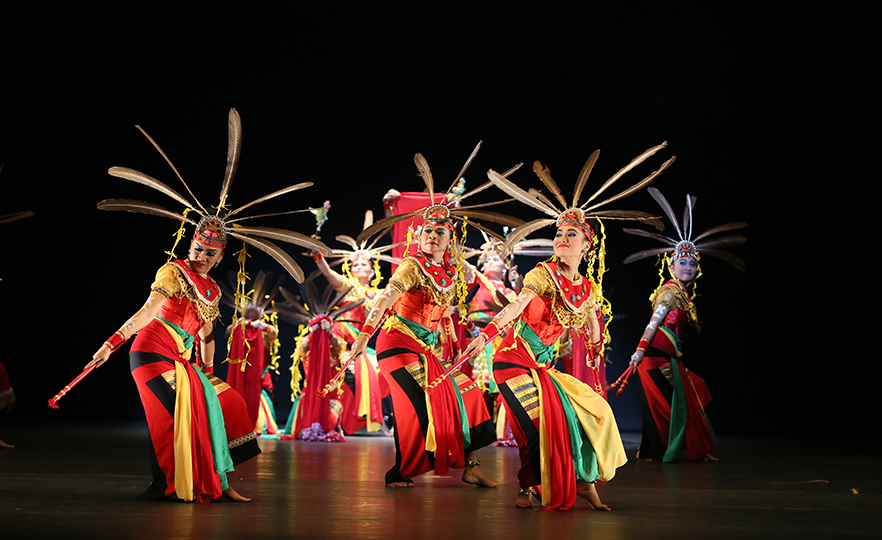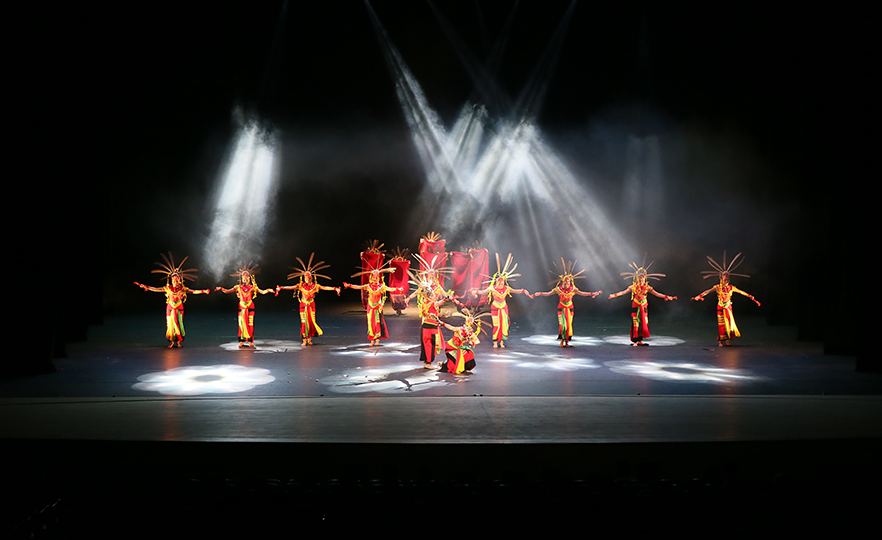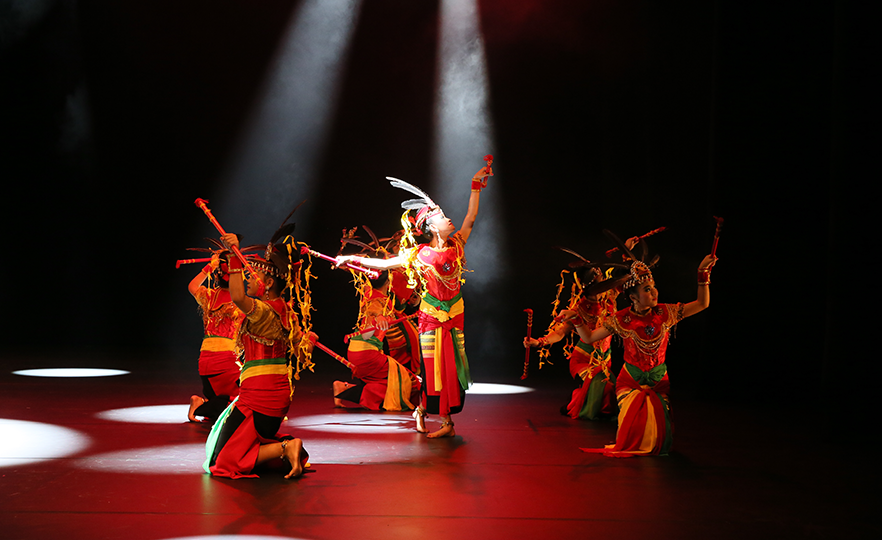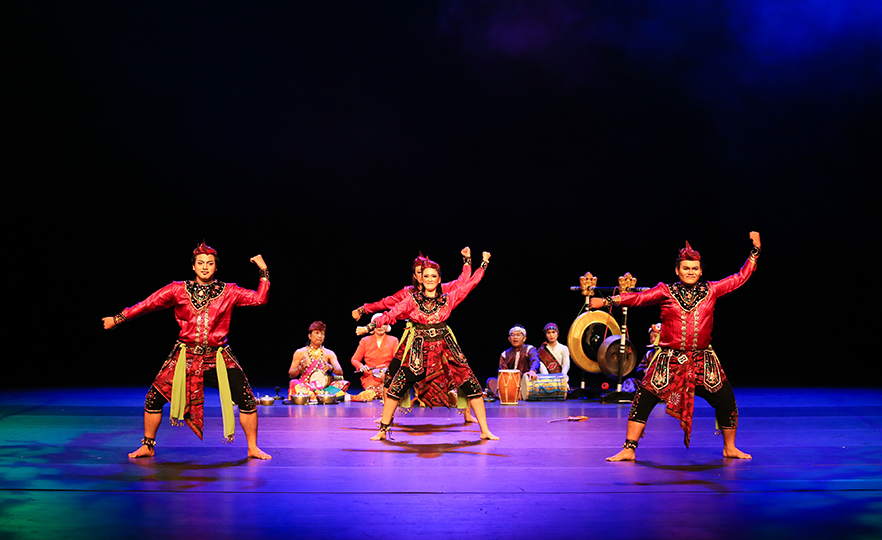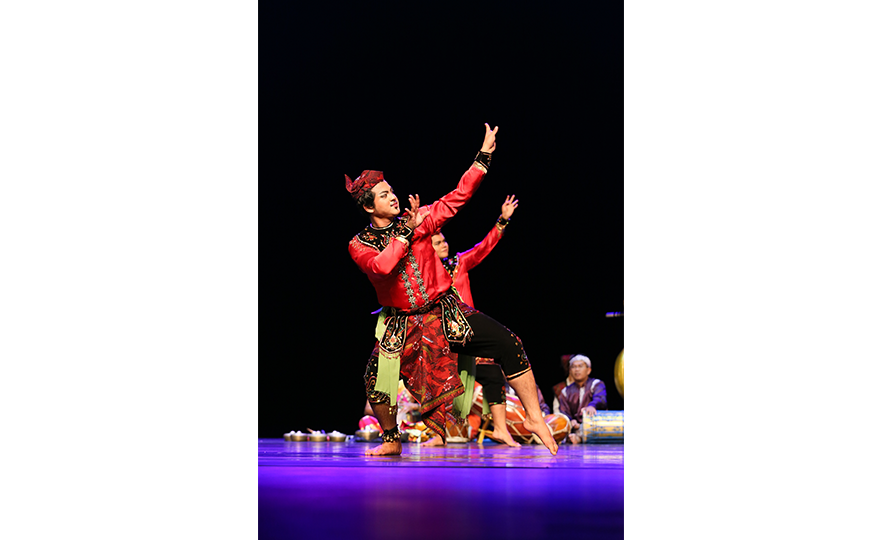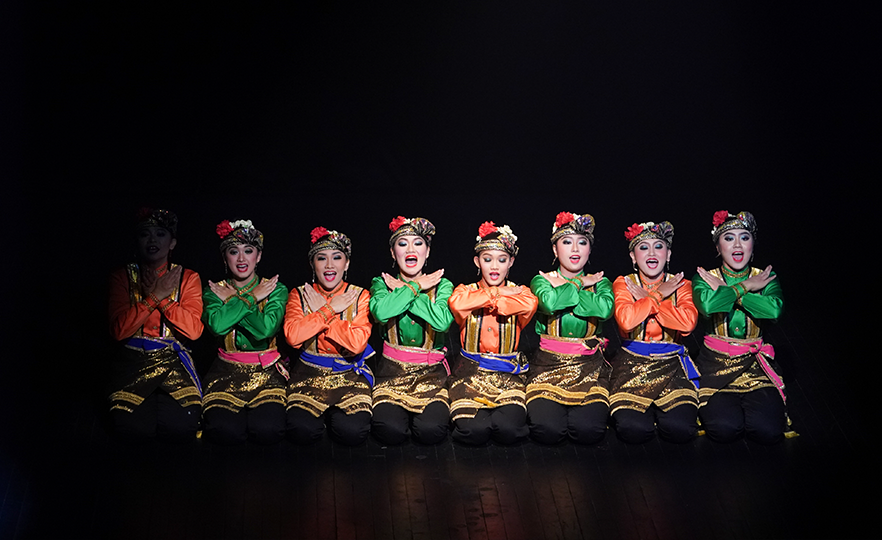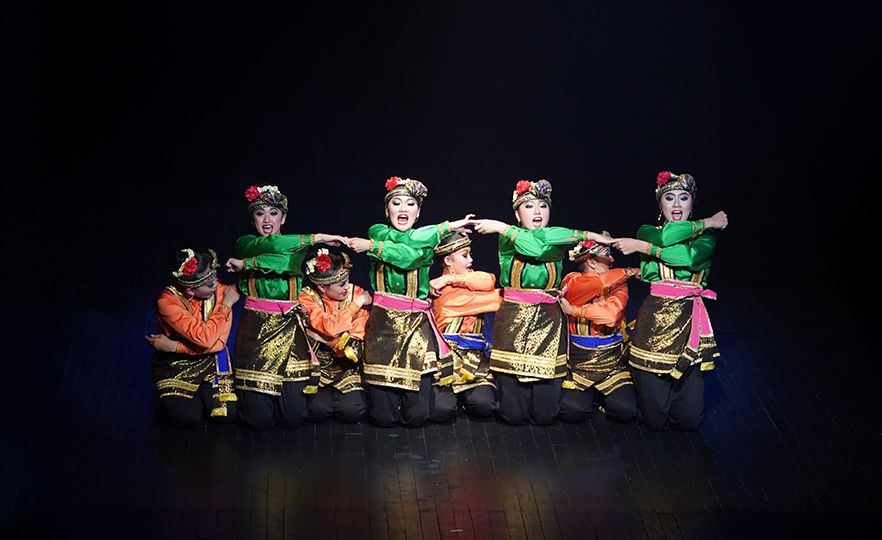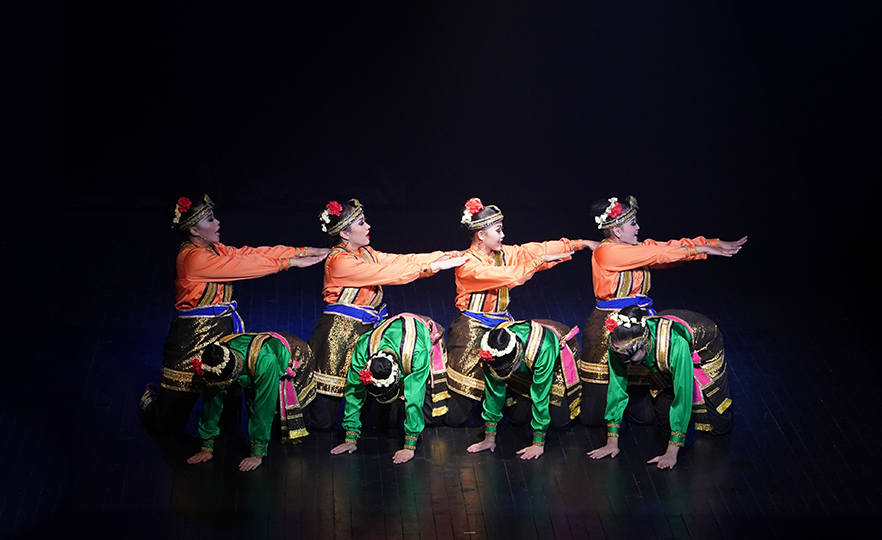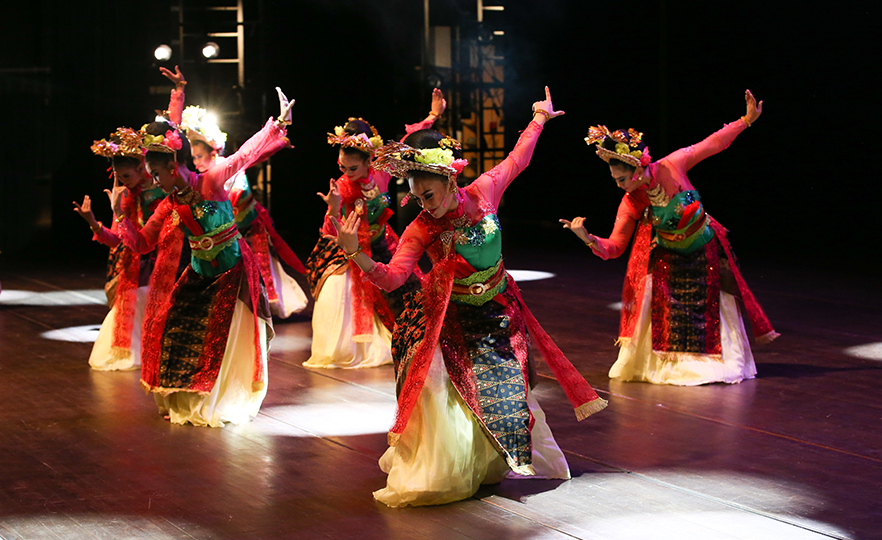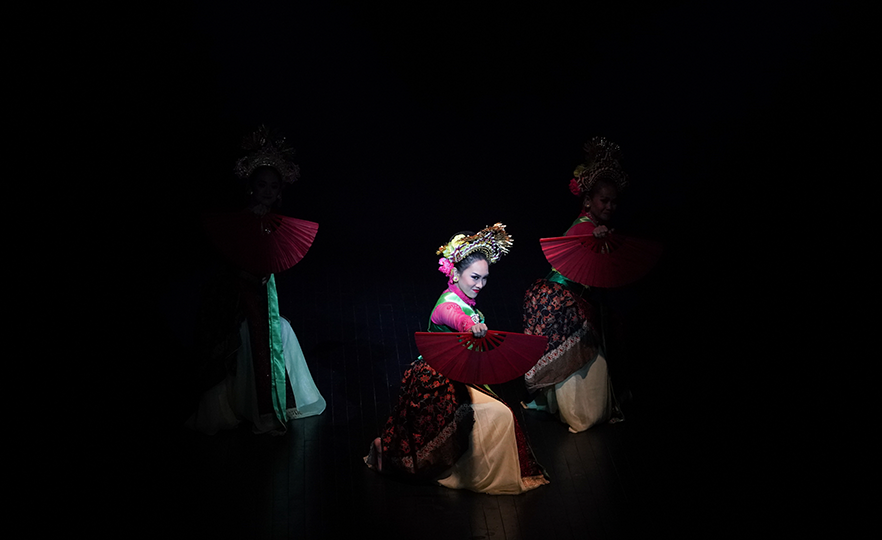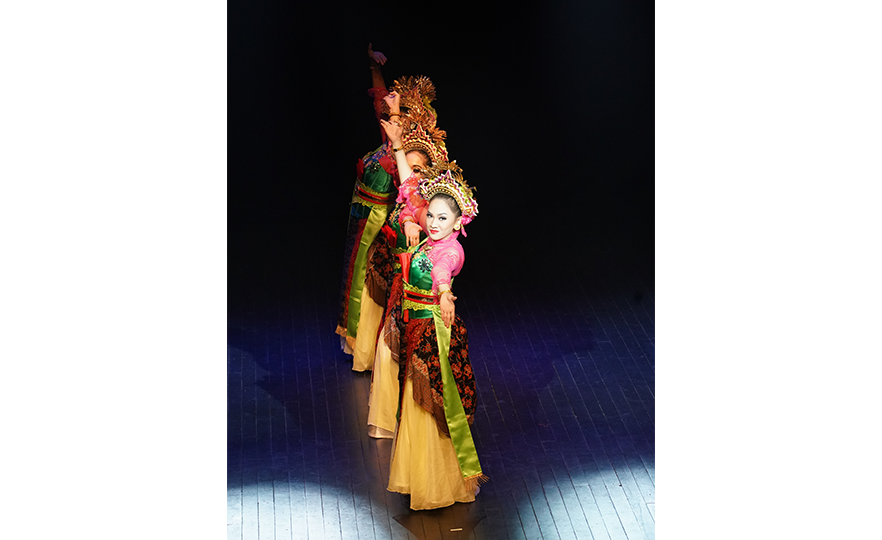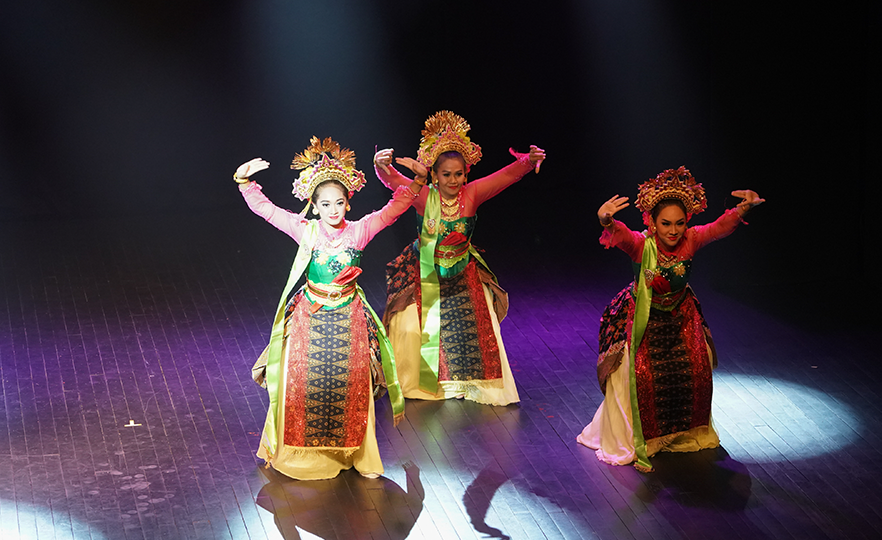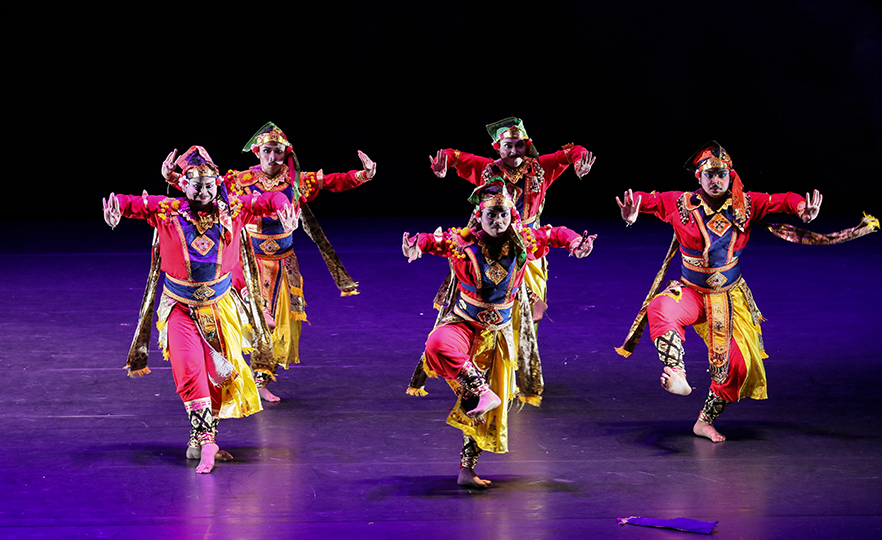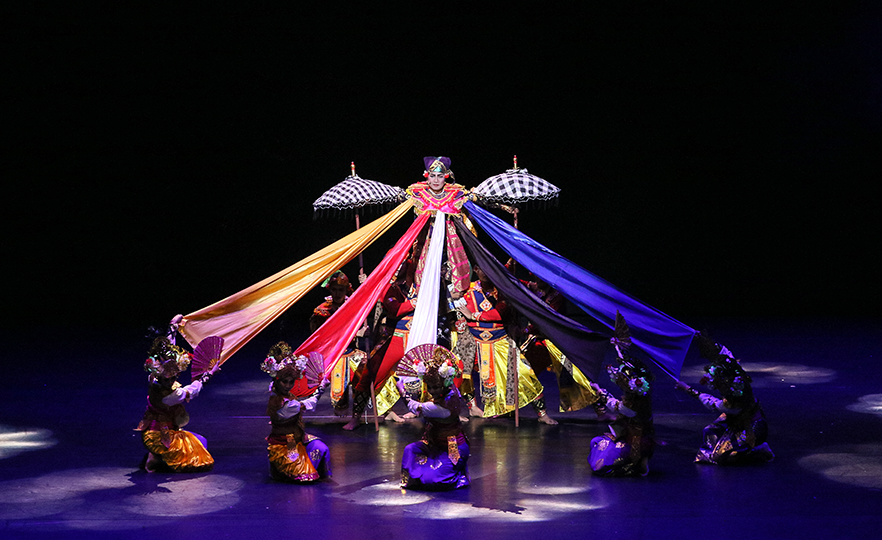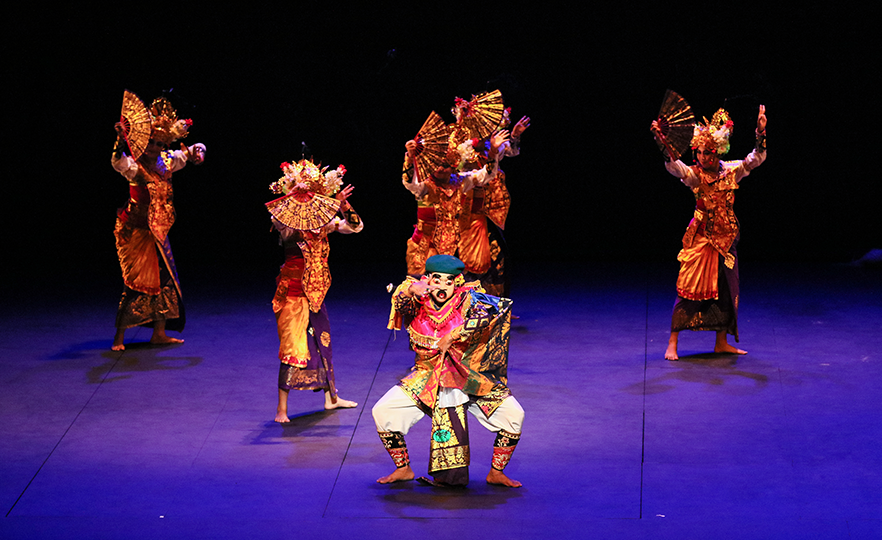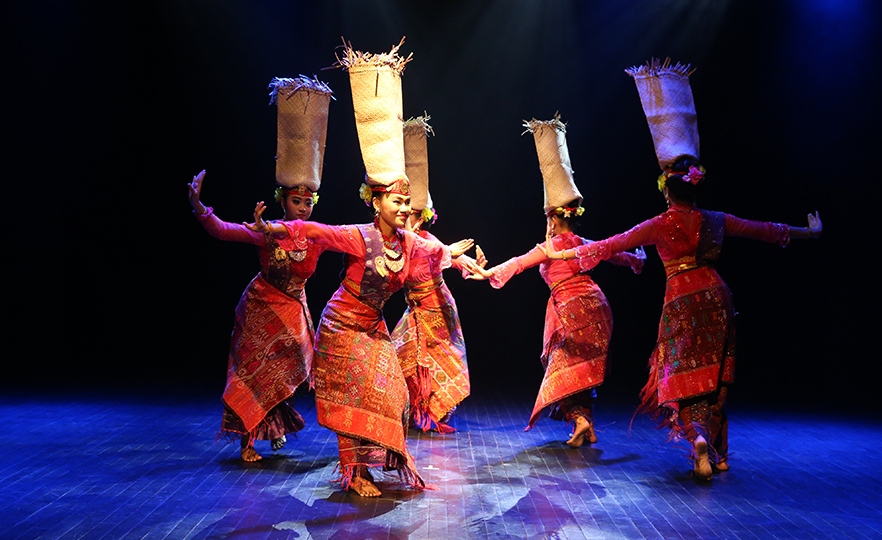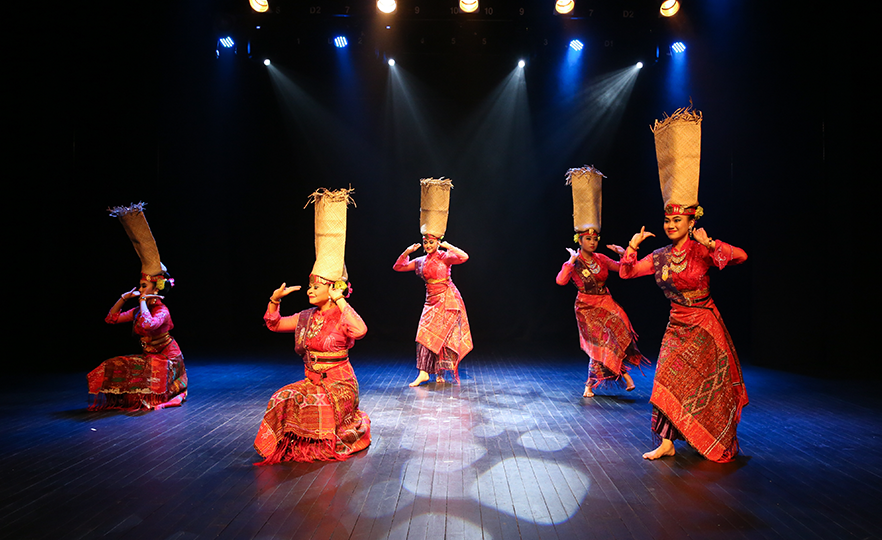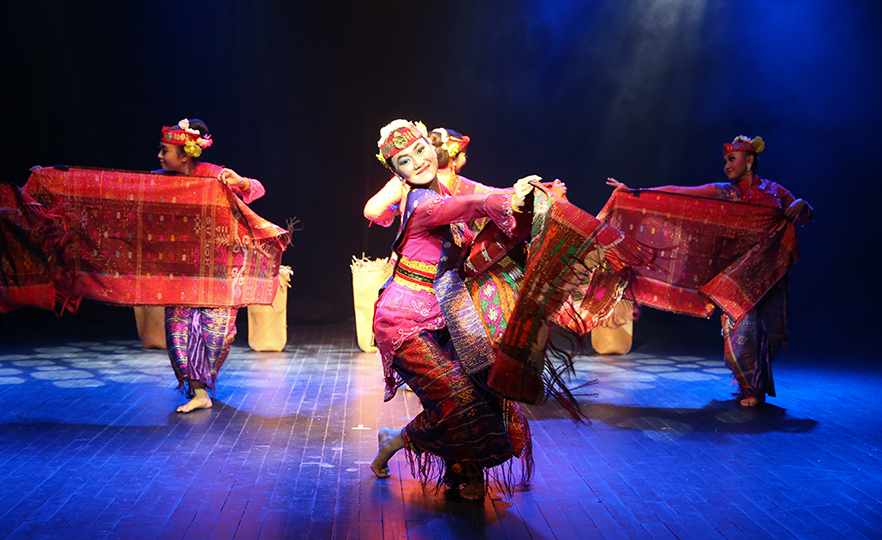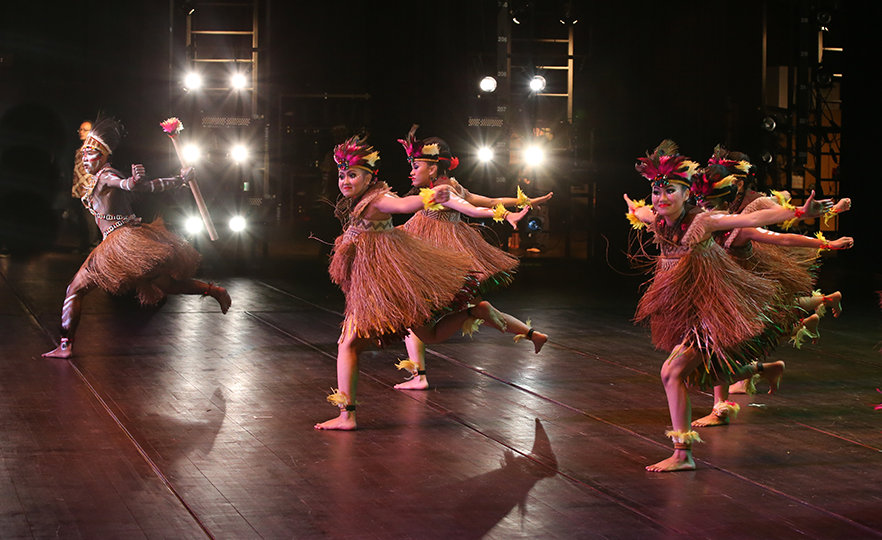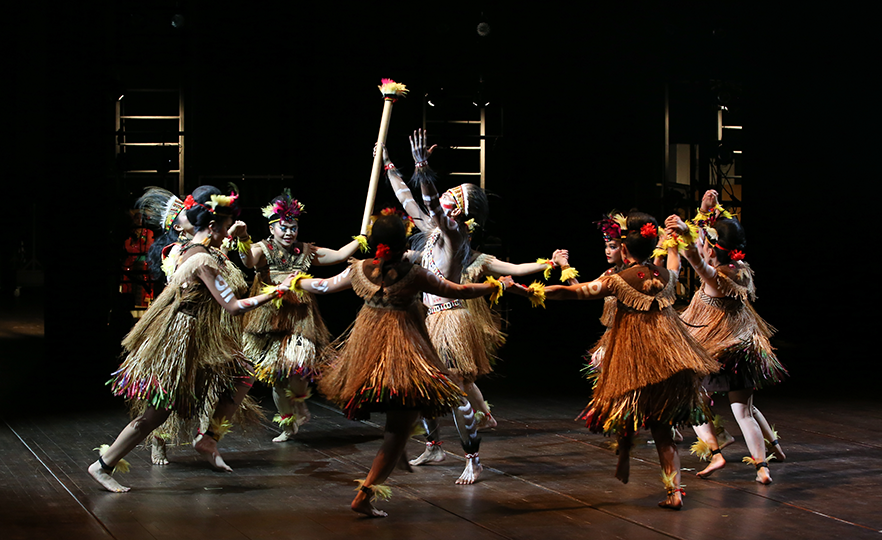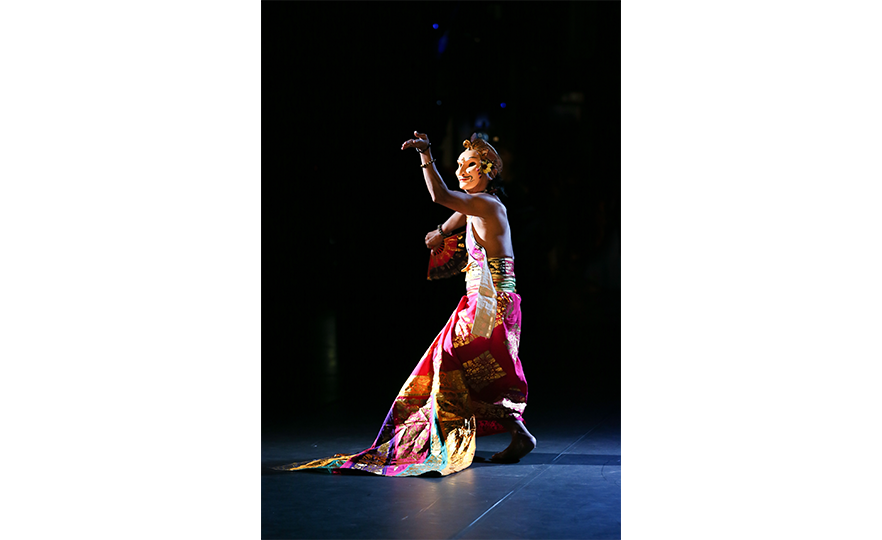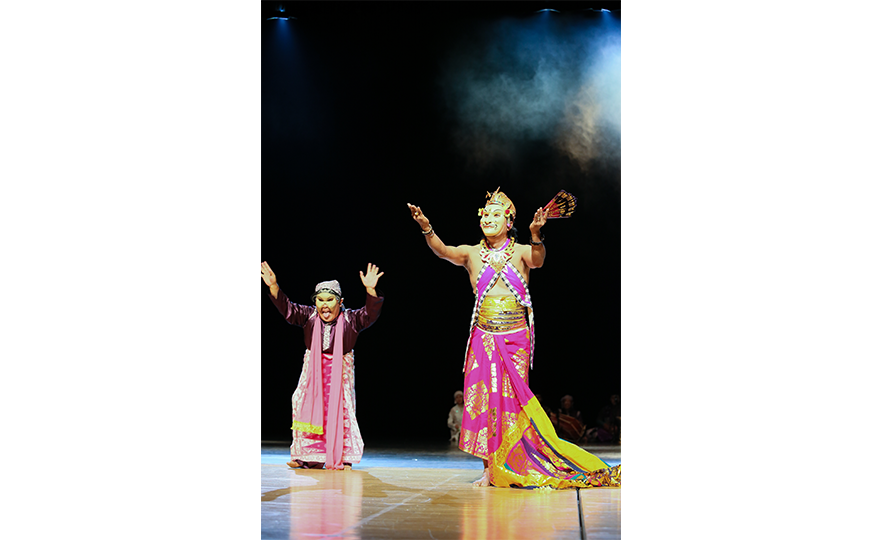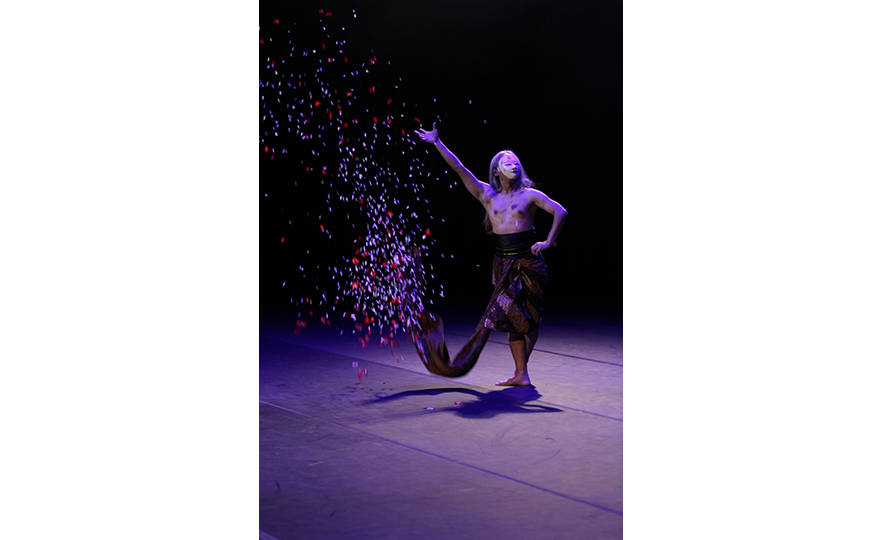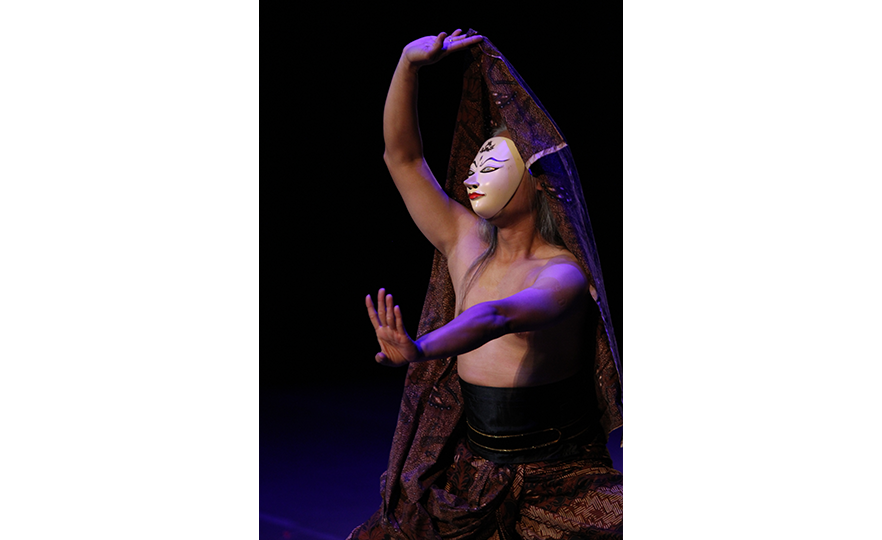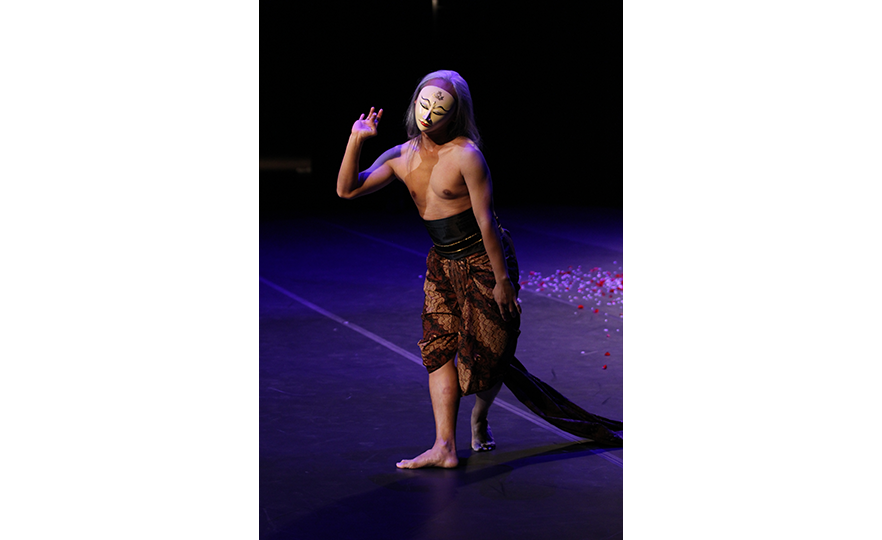- Performer
- Marwar Budaya Dance Atelier
- Date of Performance
- Sep 3, 2016
- Characteristics
- ∙Ritual dance performed to give thanks for the harvest or exorcise evil spirits
∙Mainly performed by female dancers
- Artistic director
- Maria Sofia Trimawarsanti·Cultural performance team leader at Tamen Mini Indonesia Indah
·Founder of the Marwar Budaya traditional dance studio
·1st prize in Balinese Dance at the Jakarta Youth Traditional Dance Competition and other awards
·Has been one of the top 10 traditional dance performer and composers in Jakarta creating original dances in recent years.
- Choreographer
- Maria Sofia Trimawarsanti
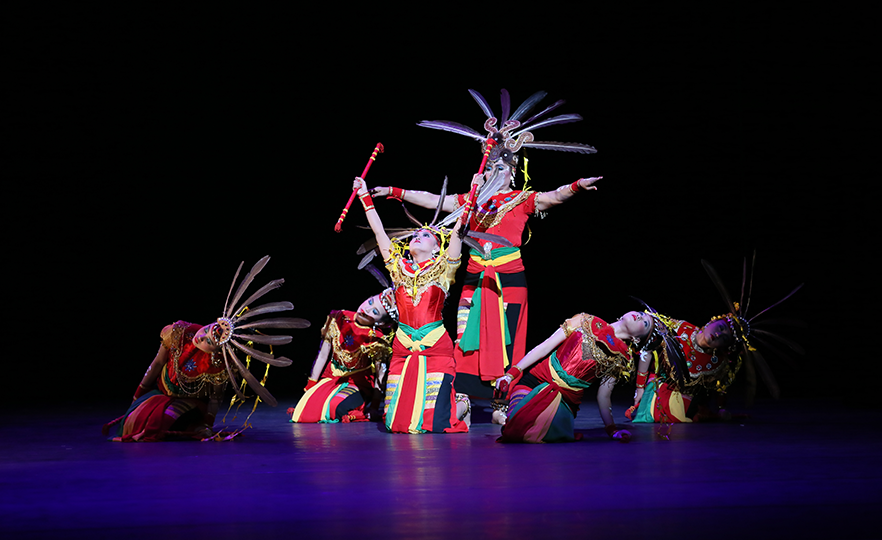
A version of the traditional Garanuhing adapted for the stage. Garanuhing can be seen in traditional parades to thank the almighty god and is typically performed by female dancers. It is performed to express gratitude and joy at the rice harvest, or at ‘Tolak Bala’ exorcism rituals to pray for the smooth recovery of people suffering from disease.
The word ‘Garanuhing’ literally means a brass bell or the sound from one. It can be spherical or bell-shaped, about 5 cm wide and hollow inside, containing a small metallic object to produce sounds. These bells are used as accessories worn on the ankles or wrists of dancers in certain regions of Indonesia. Kaliningan, a genre of music played by the Sunda people, indigenous to the west region of Java, is also referred to as Garanuhing.
Glipang Dance
Indonesia∙West Java, Probolinggo
- Performer
- Dance Company of Jakarta State University
- Date of Performance
- Sep 28, 2014
- Characteristics
- ∙A mixture of Islamic and Javan dance cultures
∙Performed at welcoming ceremonies or national celebrations
- Artistic director
- Elindra EtiDean of the Department of Dance Art, Jakarta State University, Specializes in the dance of the Minangkabau of West Sumatra in Indonesia, Research fields- Children’s art education, Cultural activities in Czechia, Germany, China and Morocco.
- Choreographer
-

Glipang is the most famous dance in the Probolinggo region of Java Island. The dance is a product of the combination of Islamic dance and Javan dance culture and the name ‘Glipang’ comes from the Islamic word ‘Gholiban’ meaning ‘habit’. Just like the name suggests, the dance depicts the daily lives of people in Probolinggo. The simple and entertaining movements taken from the traditional martial art ‘Silat’ enrich and enliven the dance. Instruments containing beans that make sounds and bamboo sticks are used to add rhythm to the dance. The humorous movements parody their colonial masters while expressing their resistance to colonial rule.
Glipang is now a dance that represents Indonesia, performed all over the country on special and auspicious occasions such as welcoming ceremonies for important guests and harvest festivals.
Rampai Aceh
Indonesia∙North Sumatra∙Gayo
- Performer
- Marwar Budaya Dance Atelier
- Date of Performance
- Aug 27-28, 2017
- Characteristics
- ∙An original dance based on the Saman dance, inscribed on the List of Intangible Cultural Heritage in Need of Urgent Safeguarding in 2011
- Artistic director
- Maria Sofia Trimawarsanti·Cultural performance team leader at Tamen Mini Indonesia Indah
·Founder of the Mawar Budaya traditional dance studio
·1st prize in Balinese Dance at the Jakarta Youth Traditional Dance Competition and other awards
·Has been one of the top 10 traditional dance performer and composers in Jakarta creating original dances in recent years.
- Choreographer
- Maria Sofia Trimawarsanti

Rampai Aceh is a reconstruction of Saman, a traditional performance art of the Gayo tribe of Aceh, Sumatra. The Saman dance which can be traced back to the 13th Century, is a group dance performed by over 10 dancers, who kneel in a row and perform the identical moves in a highly coordinated manner. They clap, slap their chests, thighs, or the floor with their palms, bounce their fingers off each other, gesture with their hands, shaking and twisting their heads from side to side to complex rhythms. The moves express scenes from nature and the daily lives of the Gayo tribe, such as leaves flying in the wind, water buffalo bathing, and ploughing the field.
The leaders of the performance are called “Penankat”, who sing poetic verses. They are accompanied by drums, rabana and dynamic clapping. The poetic verses sing about a wide range of themes including tradition and development, religion, heroic tales, morals from daily life and love stories, told with wit and satire. Saman represents the communal values of patience, cooperation and helping each other. Saman, which is enjoyed by people of all walks of life, is performed widely at a variety of occasions, including national holidays such Independence Day, religious occasions, welcoming ceremony for honored guests and weddings. However, with rapid urbanization, youth have been leaving for the city, creating problems for the transmission of Saman for the Penankat who are unable to find suitable successors.
Bajidor Kahot
Indonesia∙West Java
- Performer
- Marwar Budaya Dance Atelier
- Date of Performance
- Aug 27-28, 2017
- Characteristics
- ∙Composed of 4 to 8 female dancers
∙Makes use of fan as accessory
- Artistic director
- Maria Sofia Trimawarsanti·Cultural performance team leader at Tamen Mini Indonesia Indah
·Founder of the Mawar Budaya traditional dance studio
·1st prize in Balinese Dance at the Jakarta Youth Traditional Dance Competition and other awards
·Has been one of the top 10 traditional dance performer and composers in Jakarta creating original dances in recent years.
- Choreographer
- Maria Sofia Trimawarsanti

This is an original dance created in the 2000s, based on the popular Indonesian dance of 'Jaipongan' created by Bandung-born choreographer Gugum Gumbia Tritasonjaya in the 70s, which was in turn inspired by the Ketuk Tilu folk dance of the Sunda tribe in West Java. It is typically performed by a group of 4 to 8 young young women, characterized by dynamic movements of the hips, arms, shoulders, head and hands, accompanied by steps. The dancers wear brightly colored traditional Sunda attire called ‘kebaya’, specially designed to reveal their figures, and use scarves and fans as accessories. The Bajidor Kahot is an interesting example of the ups and downs of a local folk dance, once discounted in comparison to so-called aristocratic dances in the colonial era, being revived and developed into a dance of nationwide popularity, bringing all generations and groups of people together.
Balinese Dance ‘Sanghyang Surya’
Indonesia∙Bali
- Performer
- Dance Company of Jakarta State University
- Date of Performance
- Sep 5, 2015
- Characteristics
- ∙An original dance reconstructed from the three genres of traditional dance in Bali inscribed to the Representative List of the Intangible Cultural Heritage of Humanity in 2015.
- Artistic director
- Ida Bagus Ketut SudiasaProfessor at the Department of Dance Art, Jakarta State University, Chairperson of the Bali Culture and Tourism Commission, Research Fields: Original dance, preservation of traditional arts, activities in Czechia, Germany, China, Morocco etc., international performances, Commission activities
- Choreographer
-

This is an original dance reconstructed based on traditional dances of Bali. To the Balinese, dance is a form of religious ritual performed according to the Balinese calendar. The traditional dances of Bali are inspired by nature and represent traditions, customs and religious value. The Balinese believe that the movements of traditional dances express the views of nature, while the mudra (hand movements) are related to their daily lives, laws, faith and customs. Traditional Balinese dances can be performed by both male and female dancers, who wear elaborate traditional costumes of bright colors, imprinted with flora and fauna patterns in gold foil, and decorated with accessories adorned by golden leaves and jewelry. The dance moves are very complex and precisely detailed. Dancers are required to possess not just skill, but also inner beauty (taksu), charisma, modesty and restraint, along with special spiritual power to bring the dances to life.
Dances performed in the many communities of Bali are typically transmitted through unofficial channels from elders to children in the traditional sekaa groups. The traditional dances of Bali are cultural heritage containing the customs and culture of the Balinese, and an important part of the identity of a community. The three genres of traditional Balinese dances were inscribed to the UNESCO’s Representative List of the Intangible Cultural Heritage of Humanity in 2015.
Embas Tandok
Indonesia∙North Sumatra∙Batak
- Performer
- Marwar Budaya Dance Atelier
- Date of Performance
- Aug 27-28, 2017
- Characteristics
- ∙Danced by female dancers
∙Originated from a ritual to give thanks for the rice harvest
- Artistic director
- Maria Sofia Trimawarsanti·Cultural performance team leader at Tamen Mini Indonesia Indah
·Founder of the Marwar Budaya traditional dance studio
·1st prize in Balinese Dance at the Jakarta Youth Traditional Dance Competition and other awards
·Has been one of the top 10 traditional dance performer and composers in Jakarta creating original dances in recent years.
- Choreographer
- Maria Sofia Trimawarsanti

The Batak tribe has a population of over 8 million, making it the largest indigenous community in Indonesia. They live in the area near Lake Toba, the world’s largest volcanic lake in Sumatra. ‘Tandok’ is the basket that Batak women fill with rice during harvest season to express gratitude to the gods. To the Bataks with a deep-rooted agrarian culture, tandok is a sacred symbol of the life and survival of the community. Embas Tandok is performed during a traditional Batak ritual where the tandok is brought over, usually by 4 female dancers. The dancers wear the traditional black and red Batak costume, and use the tandok, ulos (traditional handwoven textile in the shape of a long scarf), and a sarong. The dance is performed in a traditional stage to the music of a Gondang (traditional Sumatran music ensemble). Embas Tandok is an expression of the Batak people’s prayer for longevity, the unity of the family community, and respect for their ancestors on the occasion of the rice harvest.
Tari Mansorandak
Indonesia·West Papua·Biak tribe
- Performer
- Marwar Budaya Dance Atelier
- Date of Performance
- Aug 27, 2017
- Characteristics
- ∙Originates from a welcome ritual
- Artistic director
- Maria Sofia Trimawarsanti·Cultural performance team leader at Tamen Mini Indonesia Indah
·Founder of the Mawar Budaya traditional dance studio
·1st prize in Balinese Dance at the Jakarta Youth Traditional Dance Competition and other awards
·Has been one of the top 10 traditional dance performer and composers in Jakarta creating original dances in recent years.
- Choreographer
- Maria Sofia Trimawarsanti
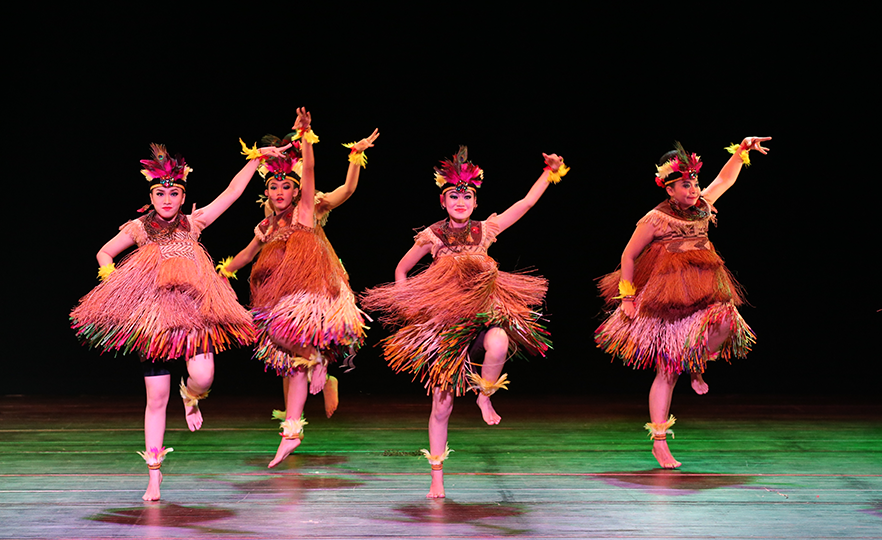
Tari Mansorandak is a dance created by reconstructing the Mansorandak ritual, a tradition passed down in the Tari region in Papua, the easternmost part of Indonesia. The dancers wear traditional costumes, paint red and white patterns on their bodies and dance an exuberant and dynamic dance. The dance is accompanied by a traditional Wor song, containing the wisdom of the Biak.
Mansorandak is a traditional welcoming ritual, performed when a respected individual visits the village, or tribesmen who had left the village a long time ago return home, to express joy and gratitude at their safe return, and ward off any bad energy that may have followed them in. The Mansorandak tradition, which welcomes guests with a heartfelt ritual, is a form of cultural heritage all the more worthy of safeguarding in modern society where the value of family is being eroded and exclusivism towards outsiders is intensifying.
Topeng Betawi
Indonesia∙Jakarta∙Betawi tribe
- Performer
- Dance Company of Jakarta State University
- Date of Performance
- Sep 28, 2014
- Characteristics
- ∙Masked dance
- Artistic director
- Elindra EtiDean of the Department of Dance Art, Jakarta State University, Specializes in the dance of the Minangkabau of West Sumatra in Indonesia, Research fields- Children’s art education, Cultural activities in Czechia, Germany, China and Morocco.
- Choreographer
-

Topeng Betawi is a masked folk dance performed by the indigenous Betawi tribe of Jakarta adapted into a stage performance. Topeng is a traditional mask worn by the Betawi, who believed that the masked dance could keep disaster at bay. This was why they hired topeng dancers to perform at joyful occasions such as weddings and circumcisions. Topeng Betawi combines music, song and dance in a single performance, just like an opera. Men wear black shorts and t-shirts with sarongs, and women were long clothing, kebayas (traditional Indonesian costume) and shawls. They wear colorful crowns on their heads and cover their faces with wooden masks as the final step. Each mask represents a different personality. The dancers voice social critique and hand out advice, using satire and humor to appease the audience. The dance moves vary depending on the theme, which ranges from ancient legends to social controversies, life in the community and other classical tales.
Panji Topeng
Indonesia∙Java
- Performer
- Dadijono Darmawan
- Date of Performance
- Nov 26, 2010
- Characteristics
- ∙Masked dance
∙“Nāgarakrĕtāgama” (1365), the oldest existing documentation of the Topeng dance was inscribed to the Memory of the World Register in 2013.
- Artistic director
- Dadijono DarmawanIndonesia Yogyakarta Dance Art Research Institute. Majored in Dance Composition at Seni Indonesia Yogyakarta in 1986, Majored in Creative Dance Art at Sekolan Tinggi Seni Indonesia Surakarta Graduate School in 1991, Participated in Singapore International Dance Day in 2010, Performance of Rupa Roti in 2008, San Timor Portrait of Passion Performance in 2007, Dosa/Keraneka, Kelahiran Kristo Kantata Natal Performance in 2006
- Choreographer
- Dadijono Darmawan
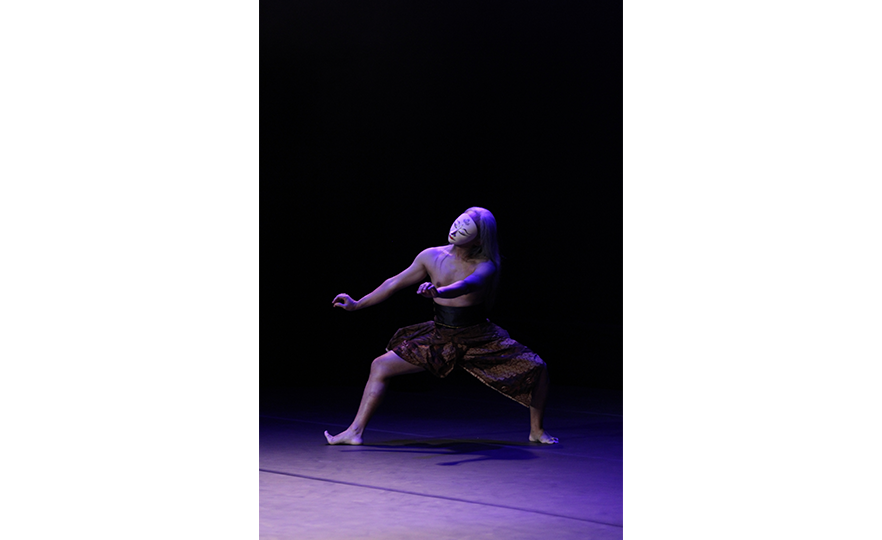
Topeng is a word which means ‘wooden mask’ and is also used to refer to a form of masked dance theater which is transmitted in Java and Bali. ‘Panji Topeng’ is one of the most popular Topeng performances, based on the Panji chronicles, transmitted in Java. The tales of Panji, which exist in a range of variations, have been transmitted widely around the Southeast Asian region, and have inspired a wide range of traditional Indonesian dances, including Topeng performed in Cirebon, West Java and Malang, Java.
Panji Topeng is characterized by the fluid and smooth movements of dancers wearing white masks. The silent and refined movements of dancers that almost appear to be gliding rather than walking, is the pinnacle of artistry in the Panji Topeng. After the diffusion of Hinduism, epics such as the Ramayana and Mahahbarata became the theme of Topeng dances. The dancers express fables, heroic sagas and legends about kings in dance, set to the music of gamelan. The oldest record of the Topeng dance can be found in the Nāgarakrĕtāgama epic about Hayam Wuruk (1334~1389), king of Majapahit, a Hindu kingdom in the 14th century. A handwritten copy of the Nāgarakrĕtāgama (1365), stored in the National Library of Indonesia, was included the Memory of the World Register in 2013.






